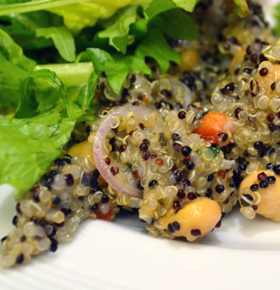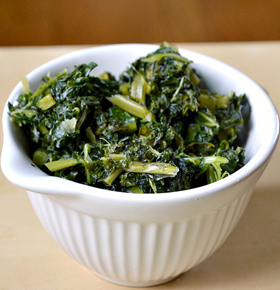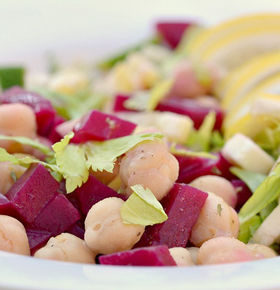Feeding your children fast and nutritious dinners can be impossible. You�re just back from work and you have to get them ready for sports and clubs with only a short break to eat. It can be easy to just cave and get them fast food on your way to their extracurricular activities.
Children can also be extremely picky with what they will eat for dinner. This is a particular issue for young children. Their taste buds are extremely sensitive and many adult flavors are not palatable. Children may also be scared of trying new things because they are different to their normal meals.
The fatty, salty flavors of fast food are widely popular in children. Unfortunately some of their favorite meals can be the most unhealthy. Food experts point fingers at these 10 worst dinner options�









Source : http://www.activebeat.com
Children can also be extremely picky with what they will eat for dinner. This is a particular issue for young children. Their taste buds are extremely sensitive and many adult flavors are not palatable. Children may also be scared of trying new things because they are different to their normal meals.
The fatty, salty flavors of fast food are widely popular in children. Unfortunately some of their favorite meals can be the most unhealthy. Food experts point fingers at these 10 worst dinner options�
1. Fried Chicken
Fried chicken is a popular dish for take out dinners. Restaurants advertise that the chicken is cooked at a high heat, preventing the oil from being fully absorbed. This may be true for the chicken meat, but consider that the breading soaks up all the fat instead. Children love the crunch of the coating on chicken, but nutritionists recommend baking it to keep the crunch without all the fat. Also watch out for the gravy that is commonly served beside take away fried chicken.
2. Hot Dogs
Hot dogs are a childhood favorite. Your children can eat them with their hands and you can make spider shapes out of boiled wieners. However, food experts point out that dogs often contain high levels of nitrates, which help preserve the meat. All cured meats contain this compound, including bacon and lunch meats. Nitrate free varieties use vegetable processed nitrate alternatives, which are still unhealthy. Instead, opt for sausages that aren�t pre-cooked and inspect the package to ensure they�re nitrate free or buy them from a healthy butcher!
3. Delivery Pizza
A weekend staple, delivery pizza can throw off an entire week of healthy eating. Each piece is packed with calories and fat. Instead, make your own healthy, homemade pizza using individual whole wheat pita breads or English muffins as the crust. Let your children top their own pizzas with low fat cheese, low sodium tomato sauce, and extra vegetables like fresh peppers, mushrooms, and tomatoes.
4. Fast Food
Picking up fast food after a long day of work can be convenient, but rather unhealthy. Your children may beg for this treat, but you won�t be doing their bodies any good caving to this request. Most fast food burger joints serve up empty calories, and high amounts of fat and salt with happy meals. They may advertise apple slices instead of french fries, but the caramel dip that comes with is still loaded with sugar. If you�re in a rush after work, try making a slow cooker meal. Set it in the morning to have dinner already prepared when you get home!
5. Grilled Cheese
Grilled cheese can be a fatty nightmare for dinner if it�s made on white bread with processed cheese slices. It is completely possible to make a healthy grilled cheese, but the bread and filling has to change. Instead of sliced cheese, add in low fat cheddar, fresh tomato, and lean sliced chicken breast. Go easier on the cheese, and cut from an unprocessed block. Instead of refined white bread, opt for a whole wheat or rye. Finally, use only a light smear of butter along the outside of the bread or don�t use any and use the toaster oven. This can cut some of the hidden calories and fat.
6. Fettuccine Alfredo
Fettuccine Alfredo is a delicious meal, but it can be wickedly unhealthy. The creamy sauce is often packed with fat and calories from heavy cream, butter, and plenty of cheese for flavor. You can certainly make a healthy pasta dish, but ditch the creamy sauces altogether. Opt instead for a fresh and hearty tomato sauce to incorporate minced vegetables in a sneaky way. Look for whole wheat pasta instead of white pasta to amp up the fiber content.
7. Fish Fingers
It can be hard getting children to eat fish. It has a stronger flavor and strange texture. Fish fingers are a popular childhood dinner as their fun shape and their mild taste is pleasing. Even if it tastes fishy, ketchup and sauces can mask it. Fish fingers contain too little fish and have way too much breading. The sauces are also packed with sugar. Try pan frying mild fish like tilapia instead and coating it in a whole grain, baked crust.8. Chicken Nuggets
It may be hard to find a child that doesn�t adore chicken nuggets. The fun shape is easy to dunk in sauces and they can eat them with their fingers. Chicken nuggets are made from the off cuts of chicken, such as the bones, organs, and fat, blended into a pink slurry and then formed into nugget shapes. Instead, serve your children real chicken tenders made from all breast meat with no additives. And pick the dipping sauces carefully by using real barbecue sauce or fresh salsa.
9. Frozen Meals
Frozen dinners are popular for saving time in the evening. They used to be packed with calories, but modern frozen dinners are typically low in calories and high in salt. Children should only be getting 1000-1500 milligrams of salt per day. One frozen dinner can contain double this amount. Instead of buying frozen dinners, make your own frozen meals. Portion out pre-cooked foods like chili, taco meat, and stew. Let it thaw overnight or in the microwave for a fast, microwavable meal.
10. Tuna Casserole
Tuna casserole is a classic weeknight meal. It sounds healthy! After all, tuna is a healthy fish! Unfortunately it�s the excess cheese, cream soup, and butter in this dish turn it from healthy to indulgent. However, you can certainly make a healthy casserole for weeknight dinners easier. Make the cheese sauce with skim milk and light cheese or use sodium and low calorie cream of mushroom soup, and add in a variety of fresh or frozen vegetables along with the tuna.
Source : http://www.activebeat.com















